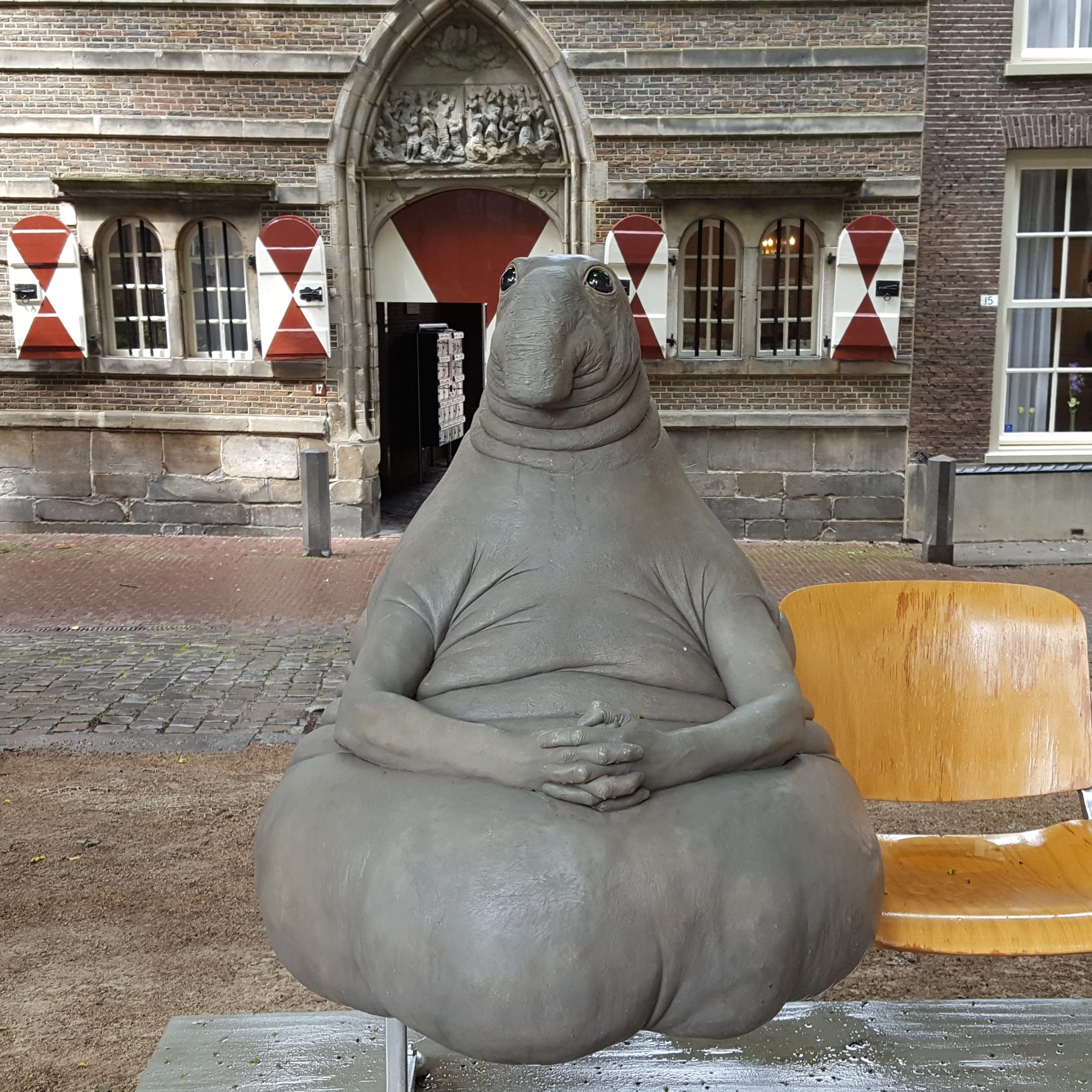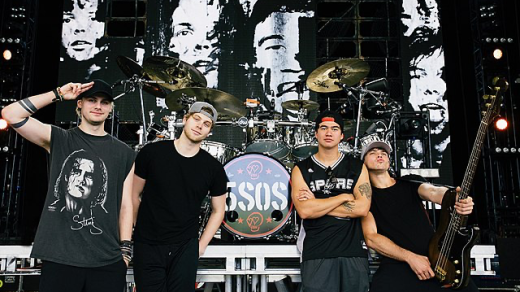I first came across this odd-looking creature on the album cover of Sand by Balthazar. I did not think much of it apart from it possibly being an A.I. generated image. After a quick google search, I learned quite a lot on this grey blob with his hands interlaced and how close I was to this sculpture, yet I had no idea it existed.
What is it?

This is Homunculus Loxodontus. It is a sculpture by Dutch artist Margriet van Breevoort. It is one of the 3000 items in Leiden University Medical Center’s Art collection. LUMC acquires art for over 30 years to showcase the diversity of art in the Netherlands and to give a platform to artists. Homunculus Loxodontus is an example of this promotion of lesser-known artists to the world, in this case more like to the Russian-speaking world.
Homunculus Loxodontus had the head of an elephant seal, hands of a human, and a body that resembles a bean bag chair. Van Breevoort said in an interview that the sculpture symbolizes the patients waiting in the hospital corridors for a diagnosis and hoping for the best. She was inspired by seeing the elderly in the hospital sitting in the same position with their hands interlaced. She wanted to create something humorous, huggable, and cheer up the patients, staff, visitors who has seen it.
How did it become a meme?
In 2017, a visitor posted a photo of Homunculus Loxodontus to Russian social network website Pikabu which is similar to Reddit. There it took the name Zhdun (Ждун), derived from the verb “zhdat”—to wait, meaning ‘the one who waits’. It resonated deeply within the post-Soviet states, like Russia, Ukraine, and Kazakhstan. This might have been a reflection on the scarcity of goods in Soviet-era and how people used to wait in lines for hours at end for their essentials. People would have wait in line without even knowing what was the line for.
Zhdun’s photo was used with the captions such as “waiting for my salary”, “waiting for Friday”. Later, people started photoshopping Zhdun into famous artworks, tv series, movies. It was also used as a criticism to the Russian Postal Service. Zhdun was photoshopped in front of the post office, in the logo of the postal service and so on.
Another popular meme format at the time was to put Zhdun in the cabinet or the parliament to criticise the slow process of legislation.
This was prominent in Ukraine, where the poor attendance to the parliament stunted legislation and reforms. Independent MP Bereza even showed up with a stuffed replica of Zhdun and placed it on a seat in the parliament. Bereza condemned his colleagues failure to show up in the height of conflict in Donbass. He even gave the podium to Zhdun.
For anyone interested to see Zhdun and wait with it for couple of minutes for his never coming appointment. Homunculus Loxodontus (Zhdun) still sits in the main entrance of LUMC. After you pass the big revolving door, you can see it on your left.
For anyone interested in listing to the album with Zhdun on the cover. Here it is:



Such an interesting read! I really like the “know your meme” format and the tweets you included made me lol 🙂 I did not know the artwork that inspired the meme was from NL, now I can’t wait to go see Hommy Lo with my own eyes.
I found this such an interesting blog post! I noticed the Homunculus meme having a boom all over the internet a while ago, but I never really knew the story behind it, nor did I know that it is actually from Leiden. As someone who comes from Eastern Europe, I have heard my parents and grandparents talk a lot about how they used to wait in long lines to get fruit or other scarce products during the communist times, which makes this art piece even more interesting. It is also really fascinating to see how literally anything can become a meme these days – an art piece, a photograph, a sentence, a part of a show and a lot more. I am looking forward to having a look at this art piece in person! 🙂